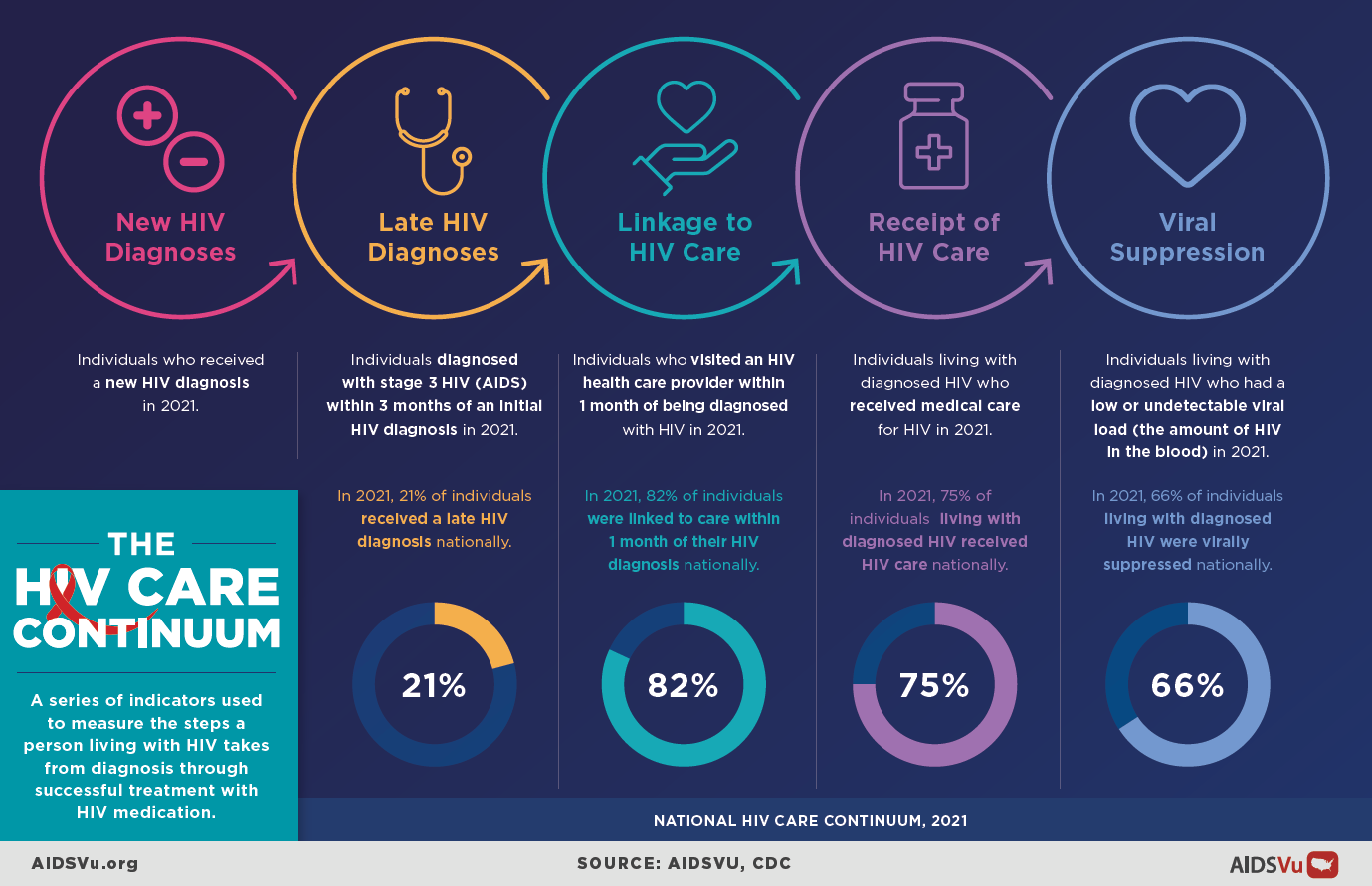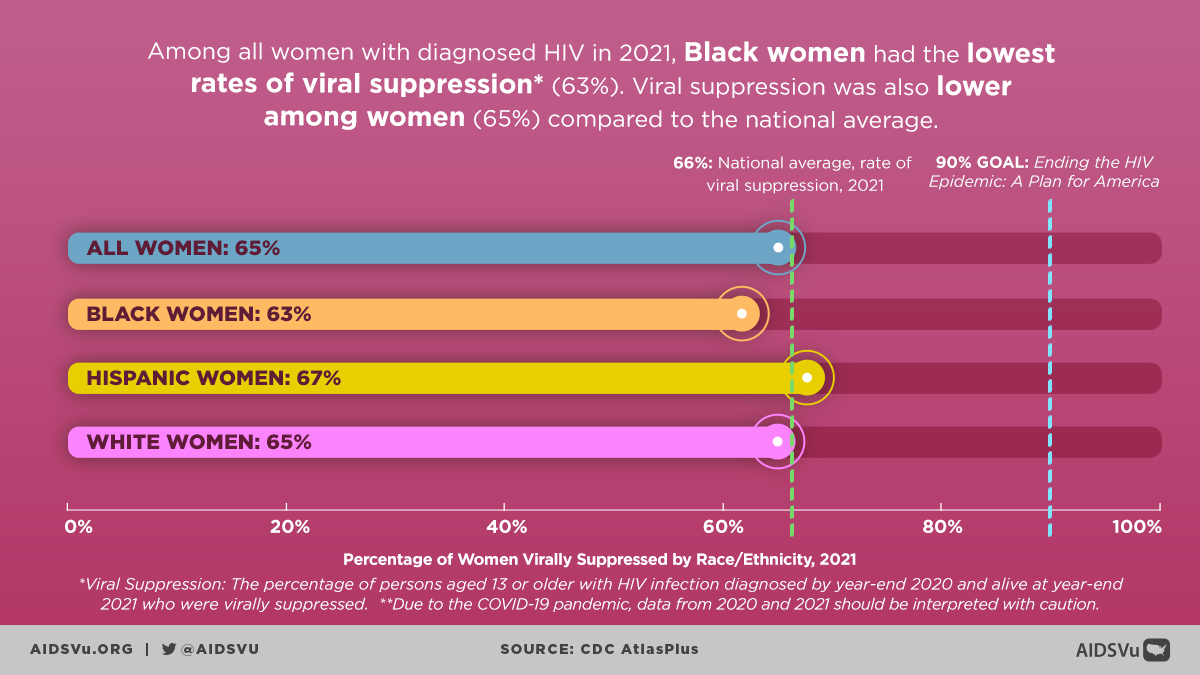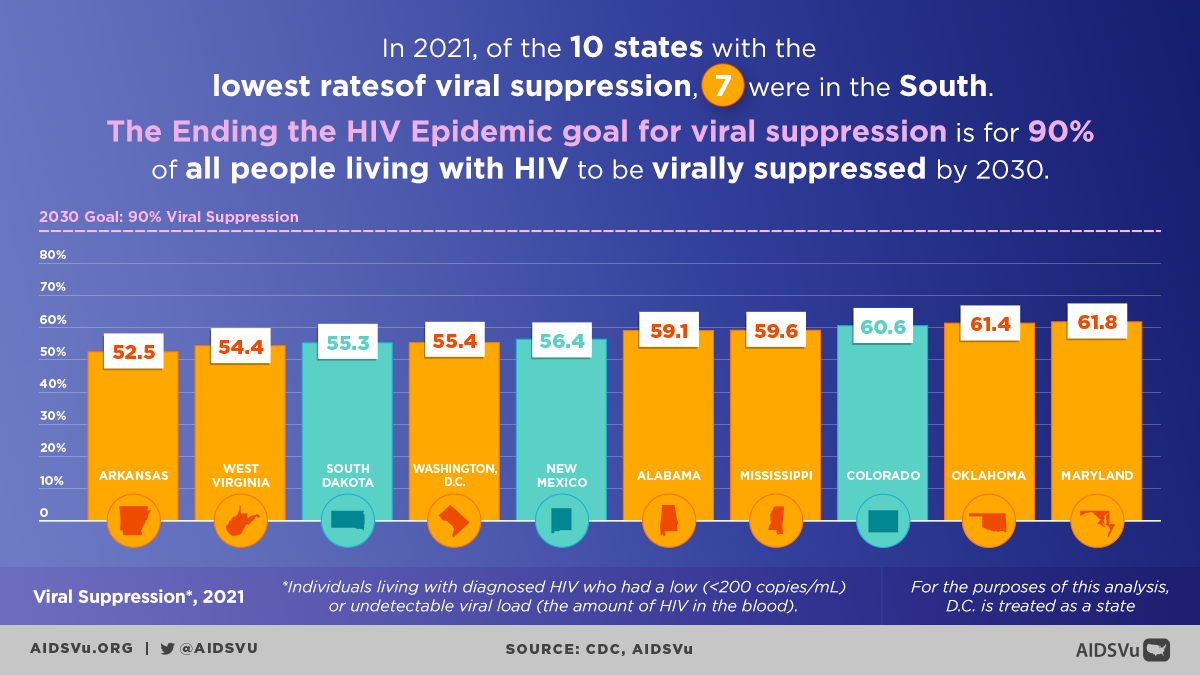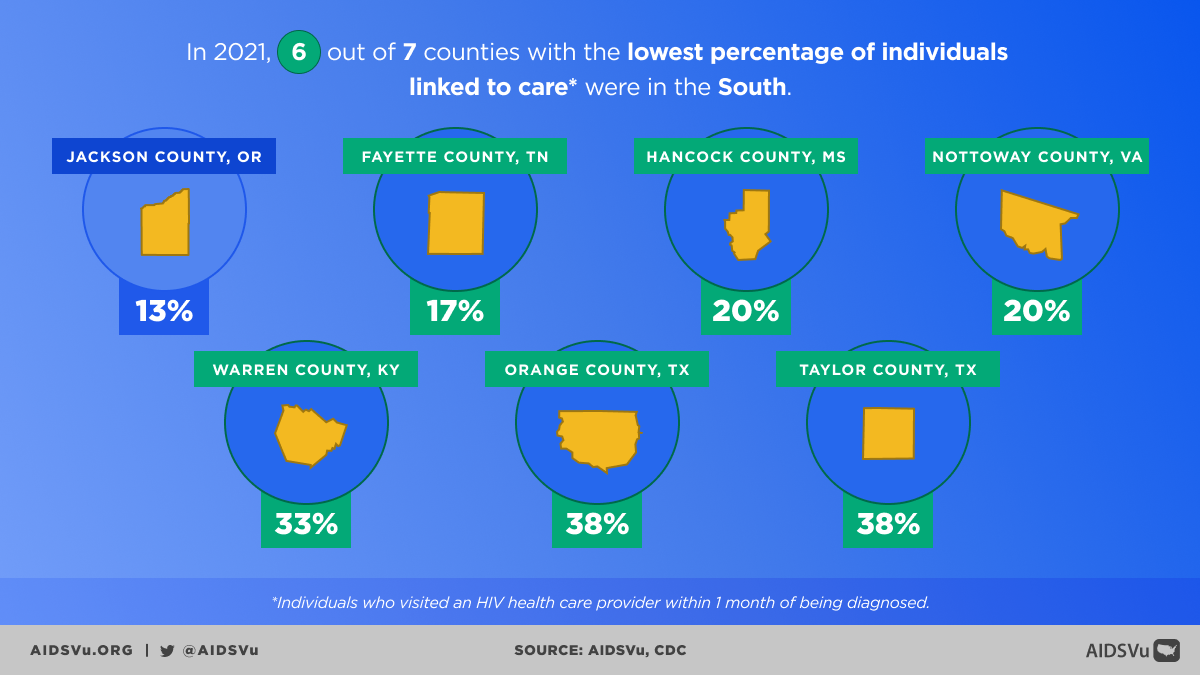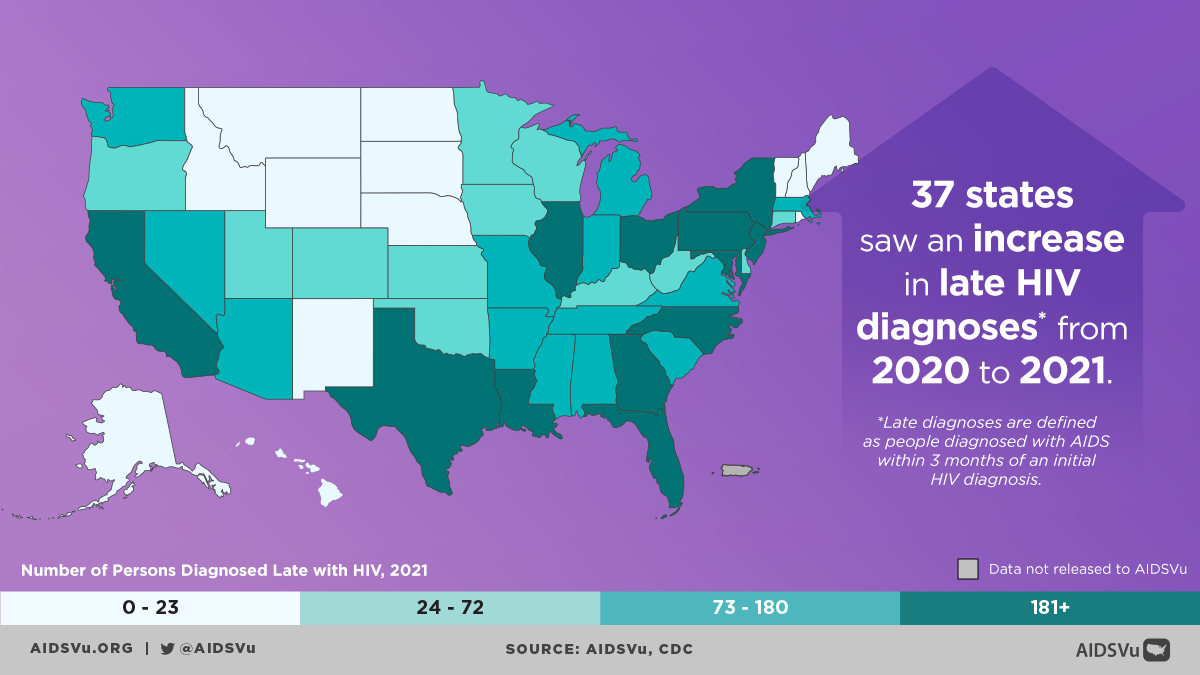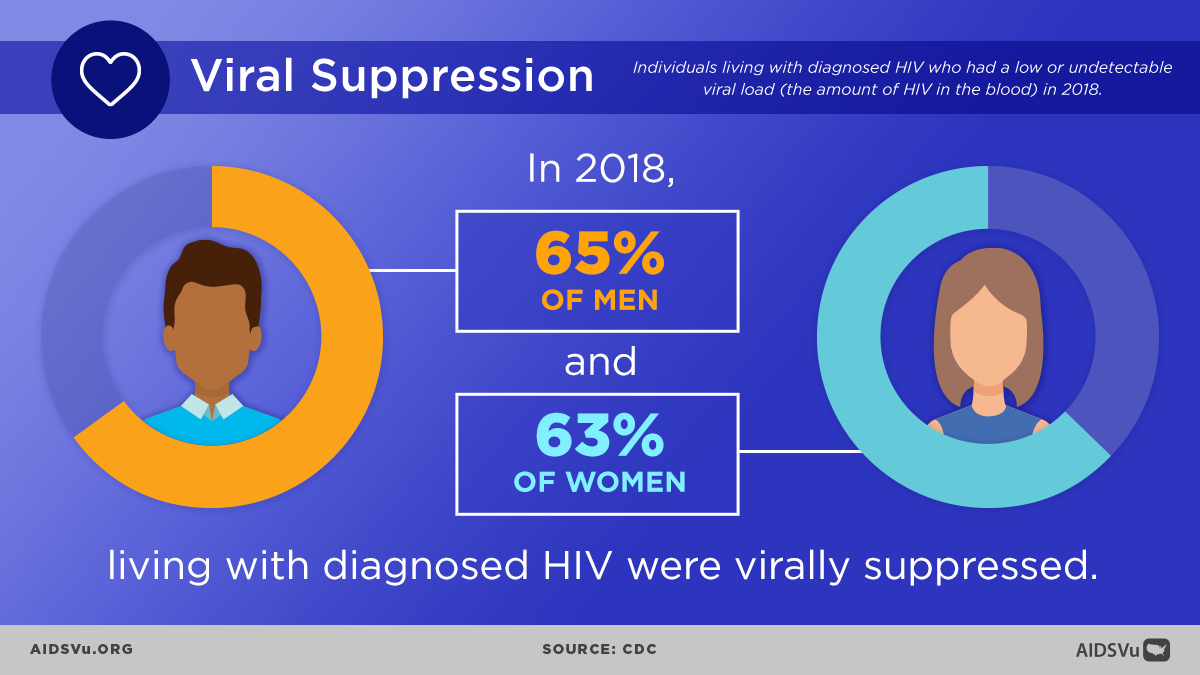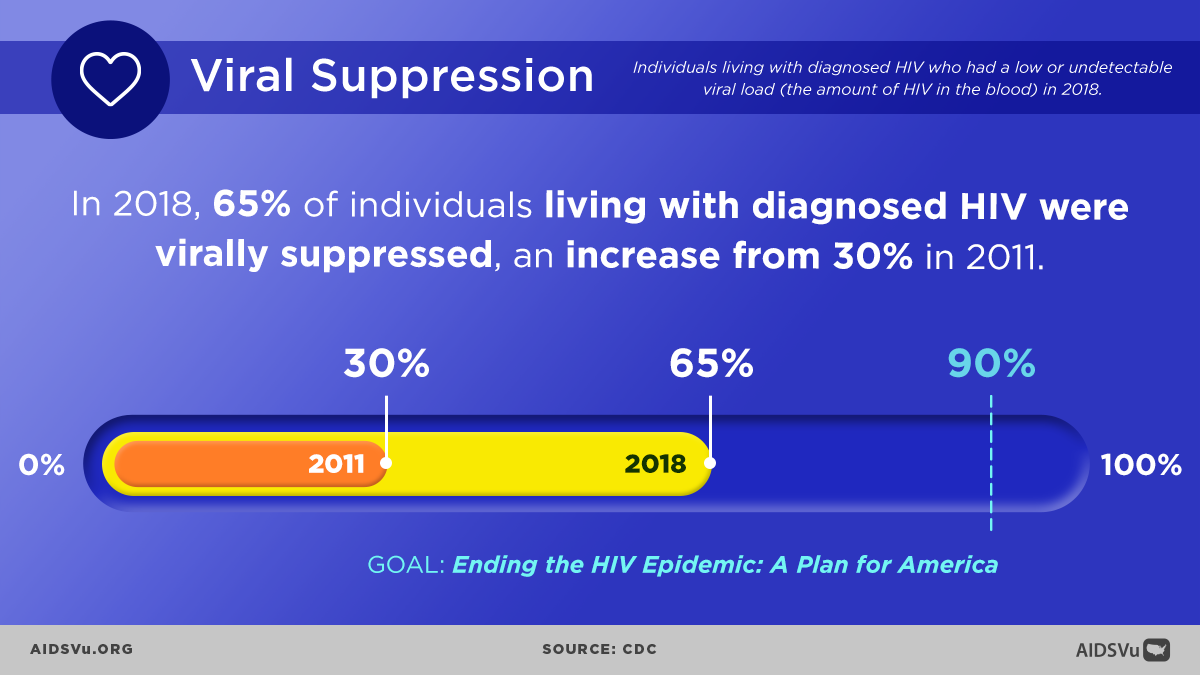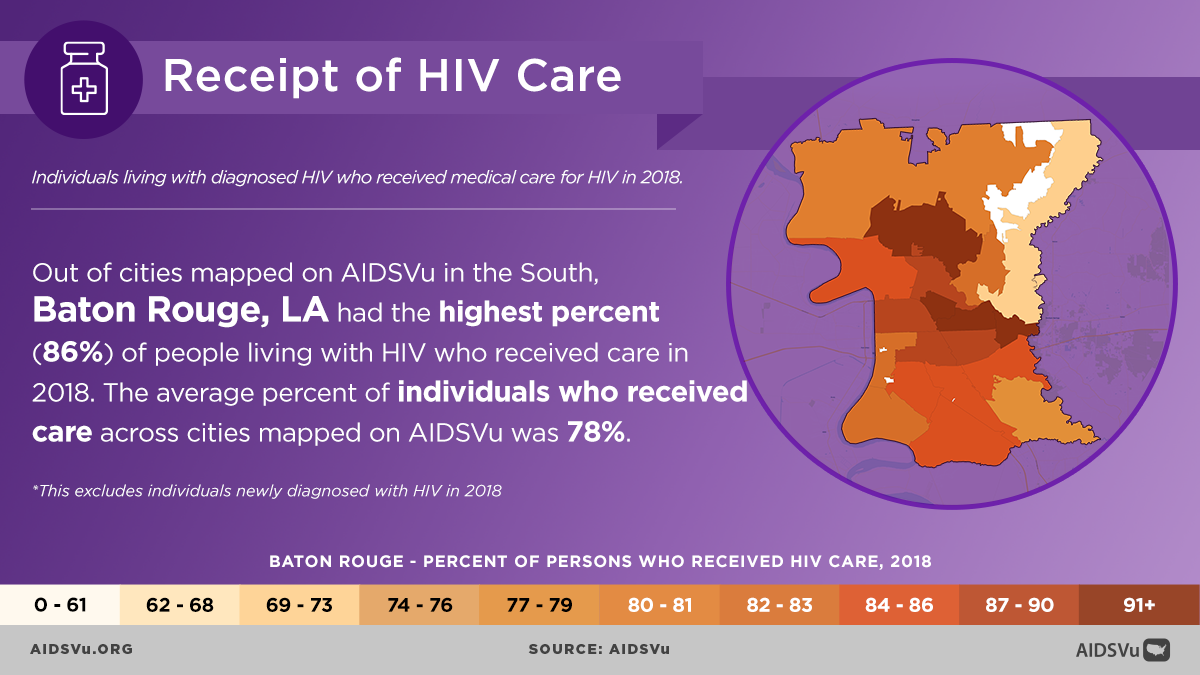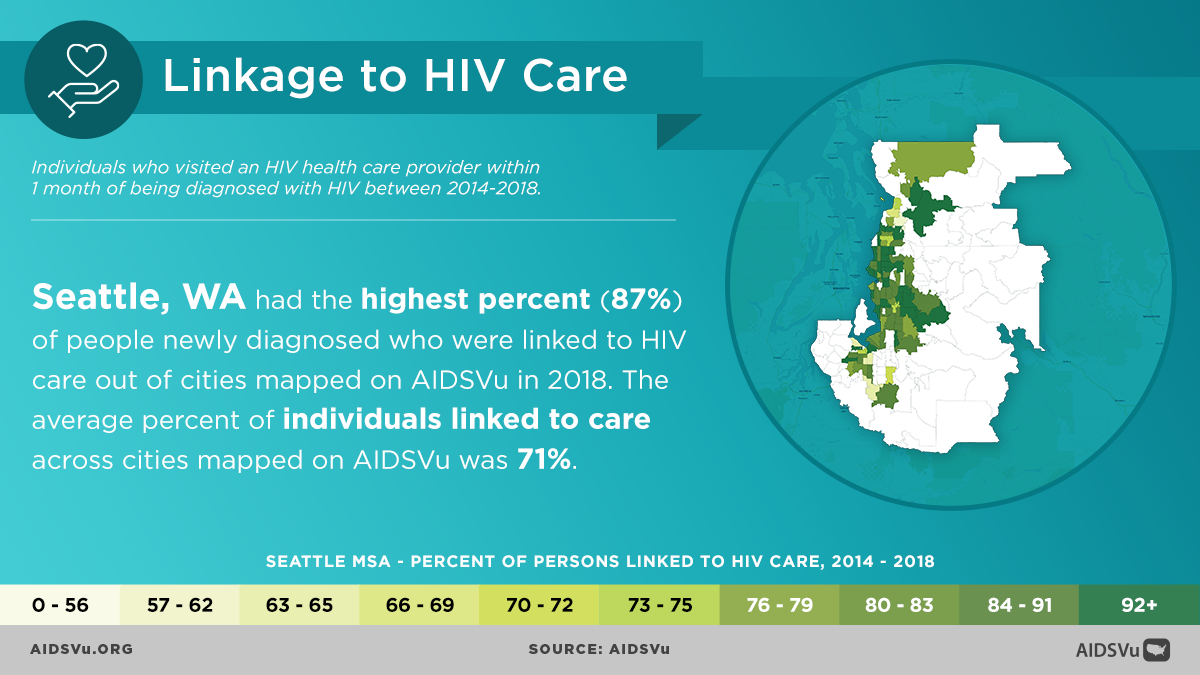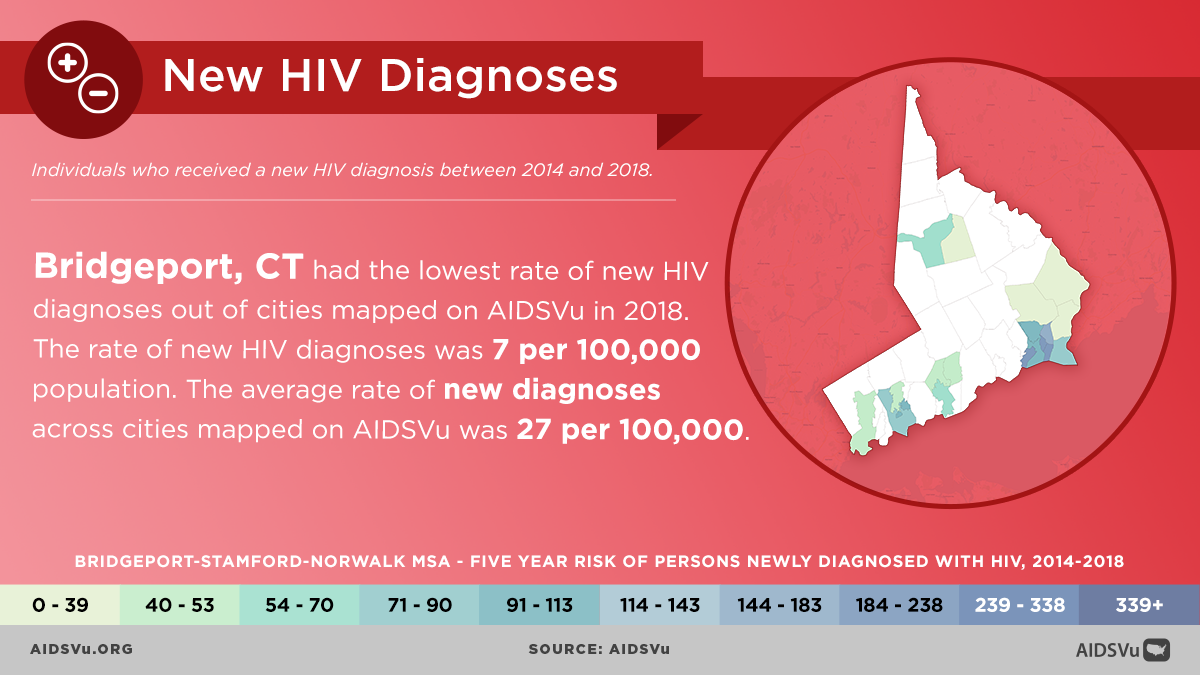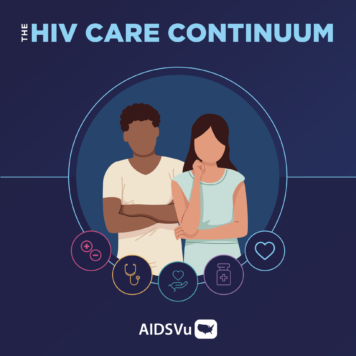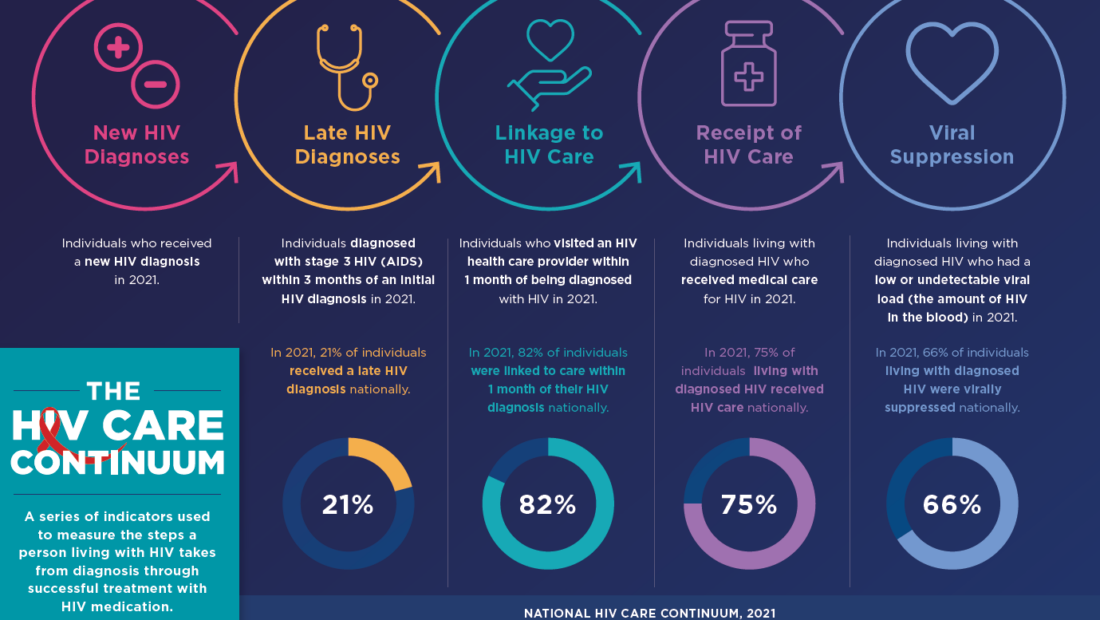
The HIV care continuum is a public health model that outlines the stages of care that people living with HIV go through from diagnosis to achieving and maintaining viral suppression. Guiding an individual through the care continuum is key to helping them achieve viral suppression, which not only helps them experience better health outcomes but also reduces their risk of transmitting HIV to others.
The HIV care continuum is vital in assessing individual care outcomes and population-level progress towards ending the HIV epidemic. Data on the HIV care continuum helps determine if people living with HIV in a given community are engaged in each successive step and where they may be facing barriers and falling out of care. This helps policymakers and service providers better determine where resources and strategies are needed to support people living with HIV to achieve the goal of viral suppression and live long, healthy lives.
Steps in the HIV Care Continuum
The HIV care continuum begins with a new HIV diagnosis and sets forth the steps people should take to get care and treatment with the objective of helping everyone achieve viral suppression. These steps include and are defined by the CDC as follows:
- Diagnosed: Receiving a positive HIV test confirmed by a healthcare provider. On a population level, statistics about new HIV diagnoses measure the percentage of the total number of people living with HIV who are aware of their status.
- Late HIV Diagnosis: Individuals diagnosed with stage 3 HIV (AIDS) within three months of an initial HIV diagnosis.
- Linked to care: Having at least one documented CD4 or viral load test within 30 days of new HIV diagnosis. The goal is to get everyone who tests positive for HIV linked to care within one month of their diagnosis.
- Receipt of care: Having had at least one CD4 or viral load test run by a healthcare professional. It tracks the percentage of people who have been diagnosed and received care in a given year. Once people get into care with a healthcare provider, they can start treatment.
- Viral suppression: Having a viral load test result of less than 200 copies/mL at the most recent test. Essentially this means that the amount of virus in a person’s blood is so low it cannot be measured by a test. Viral suppression is the ultimate goal of HIV care and treatment. Moreover, people who maintain viral suppression have effectively no risk of passing HIV to others through sex.
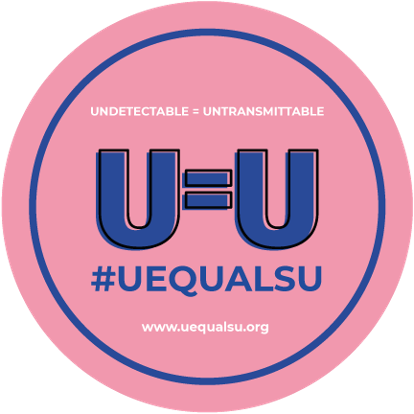
U=U
Viral suppression is the last step in the HIV care continuum. It is the foundational concept of Undetectable = Untransmittable (U = U), which means that once an individual is virally suppressed to the point where HIV cannot be detected in their blood, they effectively have no risk of sexually transmitting HIV to HIV-negative partners.
People living with HIV who achieve and maintain an undetectable viral load—in the U.S. it is considered less than 200 copies/mL of HIV in the blood—by taking antiretroviral therapy (ART) daily as prescribed cannot transmit the virus to others and experience better health outcomes.
At a community level, a high rate of viral suppression indicates a lower chance of HIV transmission among members of the community. This is often referred to as the “Treatment as prevention” strategy (TasP). A high rate of viral suppression can only be achieved by diagnosing individuals and engaging them in HIV care and treatment. A Centers for Disease Control and Prevention (CDC) analysis shows that nearly 80% of new HIV infections in the U.S. in 2016 came from the nearly 40% of people who either did not know they had HIV or who received a diagnosis but were not receiving HIV care and treatment.
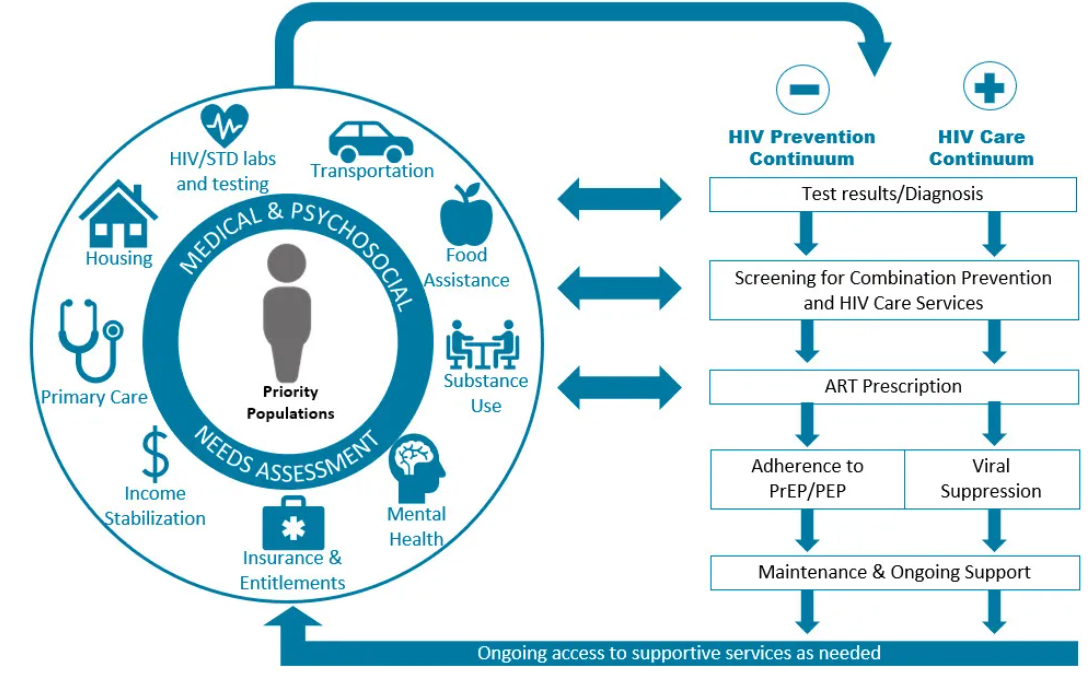
Status Neutral
There is also a growing movement among those working in HIV for a new kind of continuum that can be applied to everyone regardless of their HIV status. The New York City Department of Health and Mental Hygiene (NYC DOHMH) has been a leader in proposing this type of paradigm, which it refers to as the HIV Status Neutral Prevention and Treatment Cycle. This model suggests a sequence that starts with HIV testing. If an individual is diagnosed with HIV, they move into the classic HIV care continuum and start treatment as soon as possible with the goal of achieving viral suppression.
If the individual tests negative, they move into an HIV prevention continuum, which consists of understanding their risk of HIV exposure, learning about PrEP, and discussing with a healthcare provider whether it is an appropriate medication for them. Following those discussions, some people will start using PrEP, while others may be guided toward other prevention methods, such as condom use and more frequent HIV testing.
The goal of an HIV status-neutral cycle, however, is to be able to apply the model to the population more broadly so that everyone can take next steps to protect themselves and their partners. This model recognizes that, to reach the ultimate goal of ending HIV transmission, everyone needs to remain engaged in prevention and care efforts. The hope is that an HIV status-neutral cycle can also help reduce stigma around HIV and HIV testing because it presents testing as something everyone should be doing to protect their health—not limited to those deemed “at risk” of getting HIV.
Last, another important characteristic of the HIV status-neutral cycle is that it is viewed as continuous without a set beginning or end. This nonlinear representation more closely aligns with the experiences of people who are living with HIV as well as those who are at risk of getting it. Both groups benefit from an ongoing relationship with a healthcare provider whether they need HIV care and treatment or PrEP and regular HIV testing. It also recognizes that there is no real endpoint to HIV care or prevention as both are continuous throughout people’s lives.
5 Ways to Use AIDSVu
View Local Statistics
National-, state-, county- and city-level profiles with HIV care continuum statistics.
Learn MoreExplore Maps
Interactive maps on each step of the HIV care continuum at the state- and ZIP Code-level.
Learn MoreShare Infographics
Infographics on each step of the HIV care continuum, as well as a set of infographics on viral suppression.
Learn MoreExpert Blogs
Stay up to date with the latest Q&As from experts on the HIV care continuum.
Learn MoreContinuum City Profiles
Explore AIDSVu’s profiles of states and cities with HIV care continuum data by clicking the city dots or states below. To explore HIV continuum data for the 48 counties prioritized for Phase 1 of Ending the HIV Epidemic: A Plan for America, a ten-year initiative to end the HIV epidemic in the U.S., visit our county-level profiles.
Percent of Persons Virally Suppressed, 2021
For More Information
Learn more about the HIV care continuum with these resources.
HRSA
The Health Resources and Services Administration is an agency of the U.S. Department of Health and Human Services and is the primary federal agency for improving access to health care services for people who are uninsured, isolated or medically vulnerable.
Learn MoreCDC
CDC provides leadership for HIV prevention research and surveillance and the development and testing of effective biomedical interventions to reduce the rate of HIV infection in the U.S.
Learn MoreNASTAD
NASTAD is a leading non-partisan non-profit association that represents public health officials who administer HIV and hepatitis programs in the U.S. and around the world.
Learn MoreUNAIDS
The Joint United Nations Programme on HIV and AIDS is the main advocate for accelerated, comprehensive and coordinated global action on the HIV/AIDS pandemic.
Learn More
